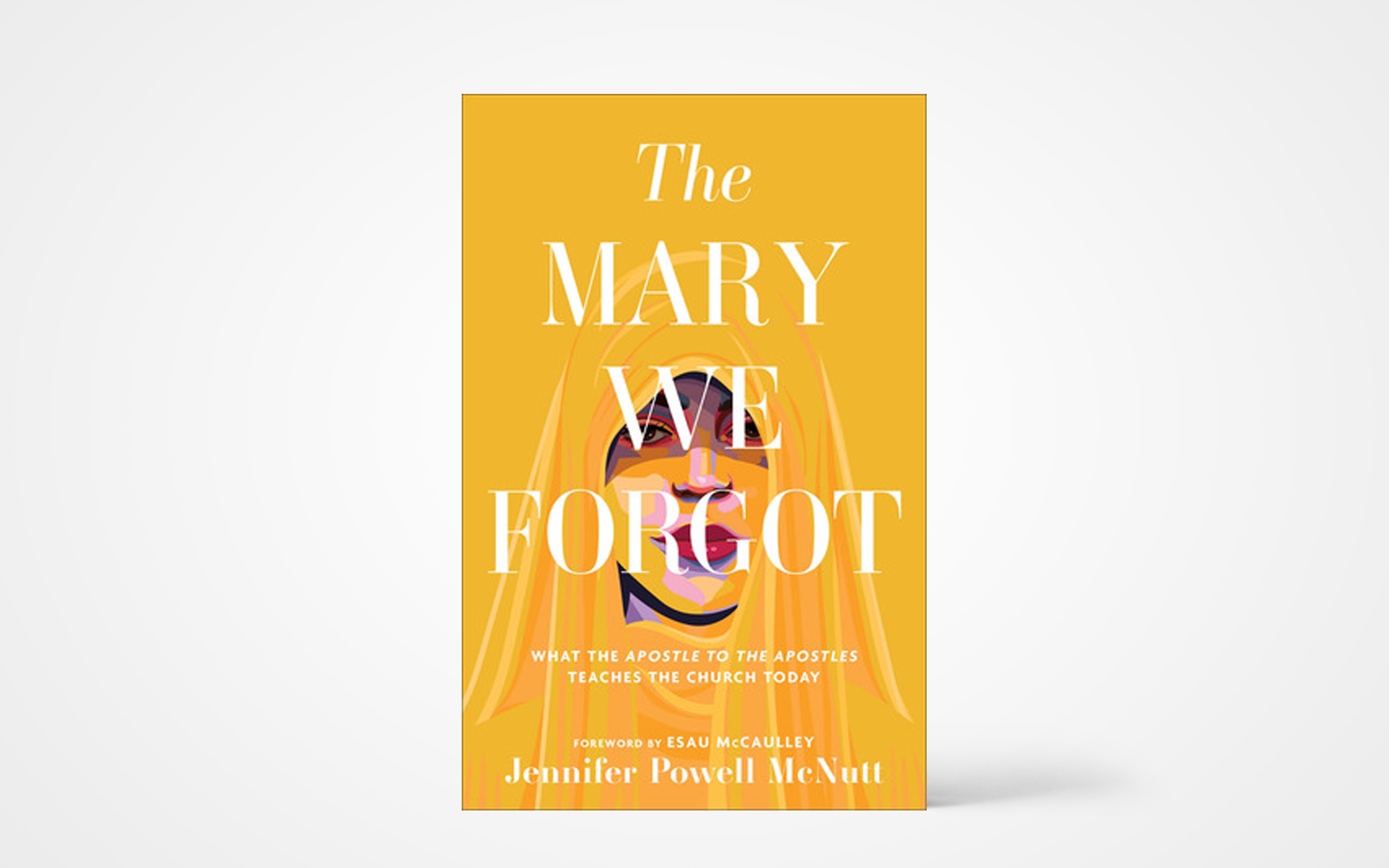As I read this bountiful and emboldening book about Mary Magdalene, my admiration for the first witness to the resurrection grew. What a brave, generous, unwavering disciple she was, and how much I had missed or been confused about her through many years of studying Scripture and even four years of Bible college!
A theology and history professor at Wheaton, Jennifer Powell MacNutt has her work cut out for her to help us understand who Mary wasn’t before we understand who she was. She wasn’t a prostitute, for one, and the fact that she was thus sexualized and scandalized all these years hides who she was, to the detriment of every believer. Because when we pay close attention to this disciple of Jesus, we are drawn closer to the one who loved, healed, called, and sent her.
In “forgetting” Mary for who she was, we have also “undervalued” her as “the first witness to the resurrection, and overlooked, particularly in the Western church, as the 'apostle to the apostles,’” McNutt writes.
Mary Magdalene also has been conflated or confused with Mary of Bethany and the woman who anointed Jesus with precious oil. She was none of these people, so who was she?
“The Gospels invite us to remember her in three critical ways: as being healed from demons, as a financial supporter of Jesus’ ministry, and as the first apostle called and sent by Jesus at the resurrection (not by title but by Christ’s authority and her qualifications),” the author writes.
McNutt establishes how history has gotten Mary Magdalene all wrong, how the “muddle of the Marys” still has a grip on how we perceive her. (It doesn’t help that many women in Jesus’ story were named Mary.)
This Mary’s story starts with a healing that changed her life. Being possessed by seven demons, as Scripture tells us, would have caused her excruciating suffering. Perhaps, the author notes, she was targeted for such demonic oppression because she would become someone so crucial to the gospel mission.
With her life transformed, Mary responded by following Jesus’s invitation to follow him as part of his traveling mission (an invitation not extended to the Gerasene demoniac of Mark 5, who begged Jesus to join him but was told to bear witness in his town).
She not only followed him, but she also supported him financially. “Mary Magdalene had the independence and resources to serve Christ and his ministry this way, and she was not the only woman to hold this role,” McNutt writes. “We know that these women provided financially for his ministry and followed him to the cross, tomb, and even Pentecost.”
“These women” are the “certain women” referred to by the Gospel of Luke, which included Mary Magdalene, Joanna, the wife of Herod’s steward Chuza, Susanna, and many others.
McNutt’s book explores these “certain women” and their critical role in Jesus’ story in a way I have never read or heard taught before. “Suddenly, as if out of nowhere, at the center of the most pivotal event in human history, these women appear front and center,” she writes. Though obscured and “flattened” by history and the church, “They’ve been there all along.”
Mary followed Jesus to the cross when few others did. She persisted after his death to care for him at the tomb, where she planned to anoint him, at great personal risk. Instead of finding his body, she found him embodied, alive before her eyes. She knew her savior’s voice, and she believed in his resurrection. When Jesus told her to go and tell what she had seen, she did not hesitate.
“Mary Magdalene quickly adjusts from her grief-tinged surprise and receives her commission,” McNutt writes. “Apostle … means 'one who is sent,' and when Mary Magdalene was sent, she ran (Matt. 28:8).”
She ran … to disciples who did not believe her at first and called her testimony “idle talk.” As McNutt points out, basing the veracity of Jesus’ resurrection on the word of a woman once possessed by demons was “risky.” But isn’t that how Jesus always operated, by choosing the risky and the unexpected to carry his message?
I loved this book and the woman at its center. I relish that Mary Magdalene, after Jesus ascended to heaven, is said by church tradition to have traveled to Europe on a “rudderless boat” in the dark of night with Martha and Lazarus to share the gospel. She is known as the “Apostle to France.” And I savor the fact that, now that I know who she was, I have a new role model to inspire and teach me.
“She may not be who we thought she was or expected, but when we remember her rightly, she becomes a faithful example who can surprise us and spur us on to proclaim 'I have seen the Lord'” (John 20:18),” concludes McNutt at the end of the book. “Are we ready to receive the one who was sent by Christ? Are we ready to run with her?” (Brazos Press)
About the Author
Lorilee Craker, a native of Winnipeg, Man., lives in Grand Rapids, Mich. The author of 16 books, she is the Mixed Media editor of The Banner. Her latest book is called Eat Like a Heroine: Nourish and Flourish With Bookish Stars From Anne of Green Gables to Zora Neale Hurston.

